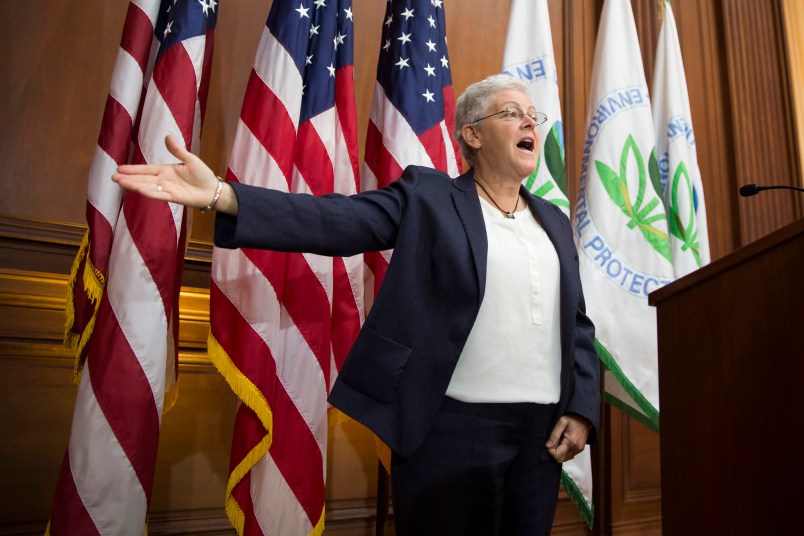The Obama administration on Monday claimed victory at the Supreme Court for its sweeping new proposal to curb climate change with rules on coal-fired power plant emissions.
The court handed down a complicated decision, divided along ideological lines, to place some limits on scope of the Environmental Protection Agency’s authority to clamp down on greenhouse gas emissions. Left unscathed was EPA’s power to regulate climate-warming carbon emissions by declaring them a pollutant under the Clean Air Act, which is the legal premise for the rules on coal.
“Today is a good day for all supporters of clean air and public health and those concerned with creating a better environment for future generations,” EPA spokeswoman Liz Purchia said in a statement. “We are pleased that the Court’s decision is consistent with our approach to focus on other Clean Air Act tools like the Clean Power Plan to limit carbon pollution as part of the President’s Climate Action Plan.”
In other words, the EPA claims the ruling, although not specifically about President Barack Obama’s new rules on coal, is consistent with the legal principle behind the executive action which was unveiled earlier this month and will be finalized in June 2015. The goal of the effort, which faces staunch opposition from national Republicans, is to reduce carbon emissions by 30 percent by 2030 (from 2005 levels).
The split decision in Utility Air Regulatory Group v. EPA, written by Justice Antonin Scalia, held that simply emitting greenhouse gases is not a sufficient basis to force industry groups to get a permit to expand or build new facilities. The EPA said the Court’s ruling will allow it to regulate 83 percent of carbon emissions, as opposed to the 86 percent coverage it has claimed.
The Supreme Court decision doesn’t necessarily mean legal challenges to the new EPA rules, which are widely expected, cannot succeed. But it appears to complicate one legal avenue for its opponents.
“The Supreme Court’s decision is a win for our efforts to reduce carbon pollution because it allows EPA, states and other permitting authorities to continue to require carbon pollution limits in permits for the largest pollution sources,” Purchia said.
Environmental groups also interpreted the ruling favorably.
“The decision builds on the Court’s prior decisions upholding most important Clean Air Act authority in the fight against global warming – EPA’s responsibility to set national standards to curb the carbon pollution emitted by automobiles and power plants,” said David Doniger, director of the climate program at the Natural Resources Defense Council.
Two months ago, the Supreme Court upheld the EPA’s authority to regulate coal pollution that wafts across state lines.











And the calls for the de-funding of the EPA will commence in 3…2…1
…about 40 years ago?
Aren’t executive orders only as good as long as the President remains in office or is succeeded by another Democratic President that is willing to be environmentally friendly to people and other living things? In other words, if a Rethuglican President gets elected, aren’t all bets off by a potential reversal of President Obama’s executive order? Gawd, I hope we can sustain the Presidency in 2016. Too much is at stake. Waaay too much.
Calls for it, I won’t be surprised, but trying to sell unchecked pollution as a noble example of American freedom won’t be easy.
That coal ash in your water? That’s American Jobs.
That benzene in your ground water? That’s American Jobs.
That smoke in your air? That’s American Jobs.
There you go.